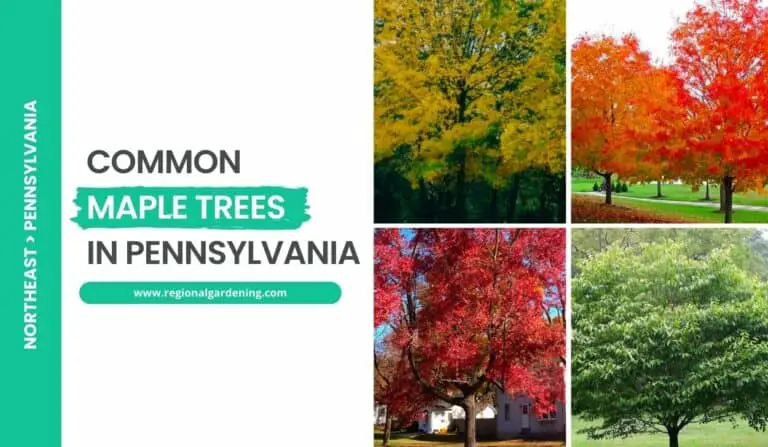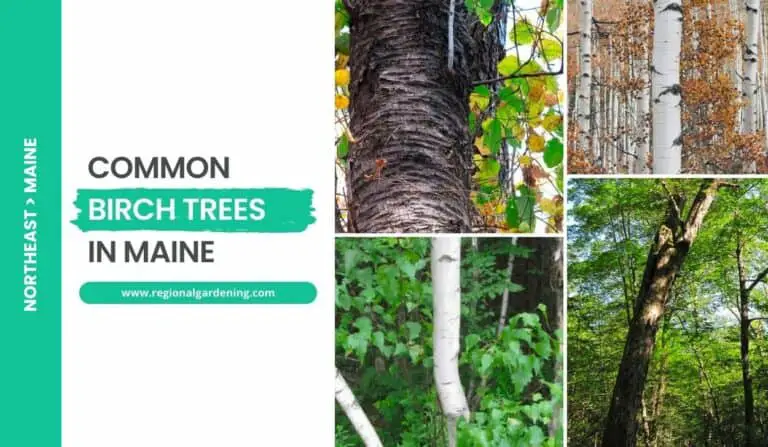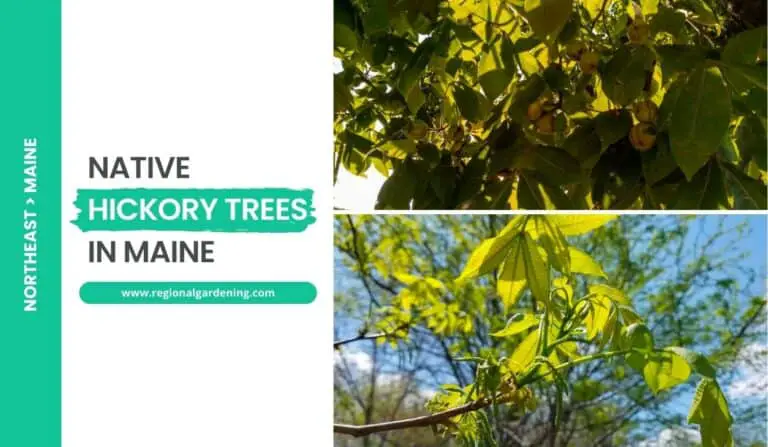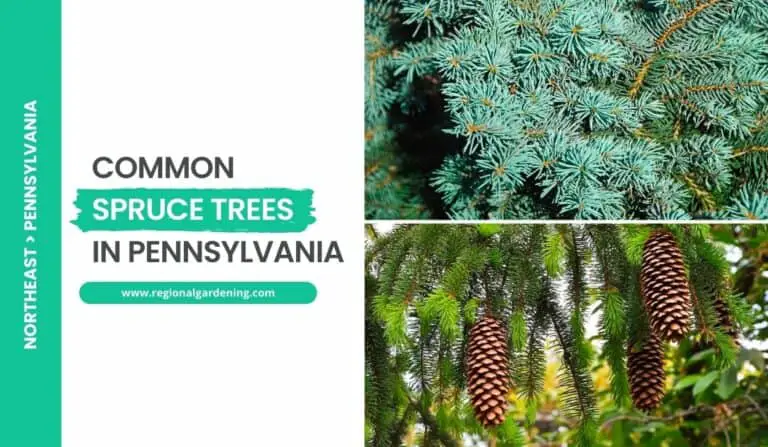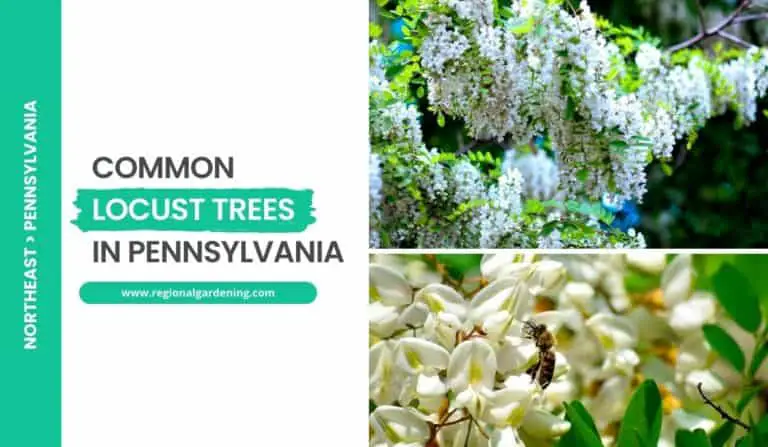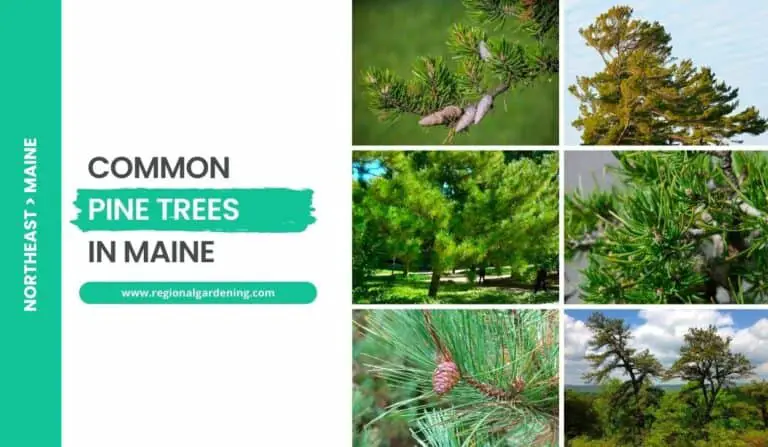4 Common Cedar Trees In Pennsylvania (Photos & ID Guide)
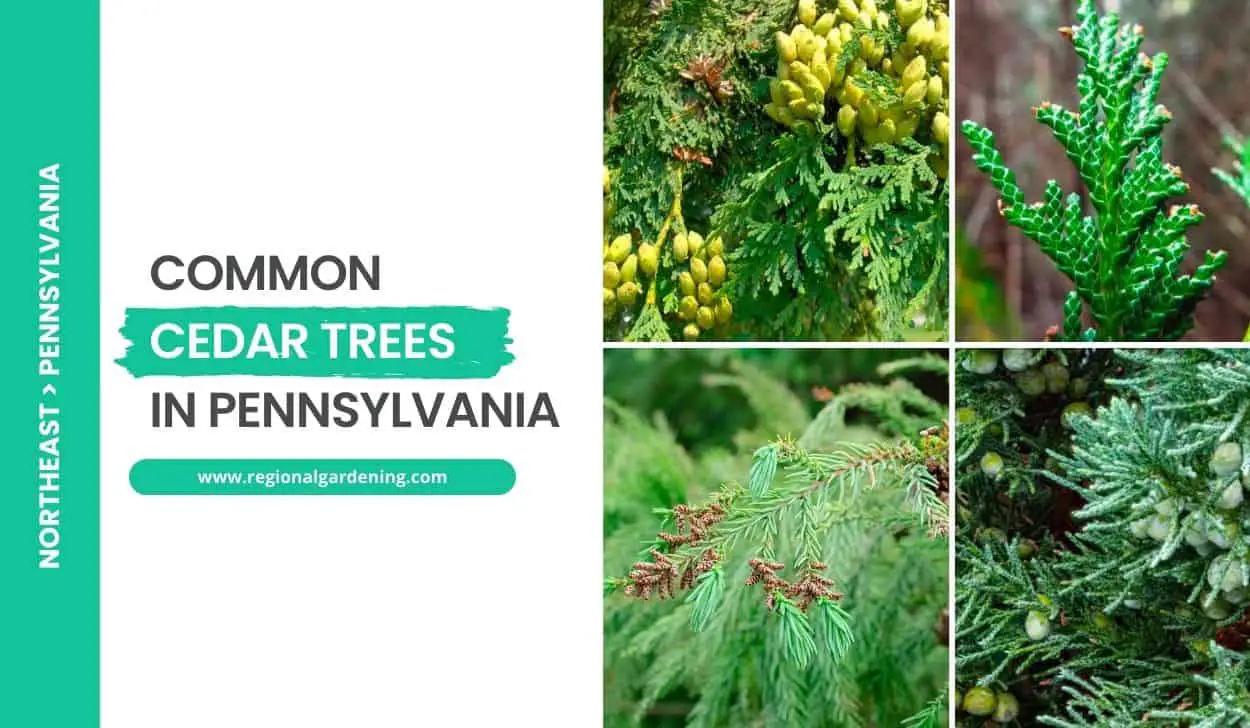
Pennsylvania is home to four common and enthralling cedar tree species, each with its distinct charm and adaptability to the state’s varied landscapes.
This article will take you on a journey to discover these beautiful cedars, complete with high-quality photos and detailed descriptions to help you identify them.
From the well-known Eastern Red Cedar with its feathery foliage and attractive berries to the aromatic and moisture-loving Northern White Cedar, we will learn about each species’ distinguishing characteristics, growth habits, and preferred growing conditions.
So, let’s get started with the Northern White Cedar, the most important of all the cedar trees in Pennsylvania.
1. Northern White Cedar
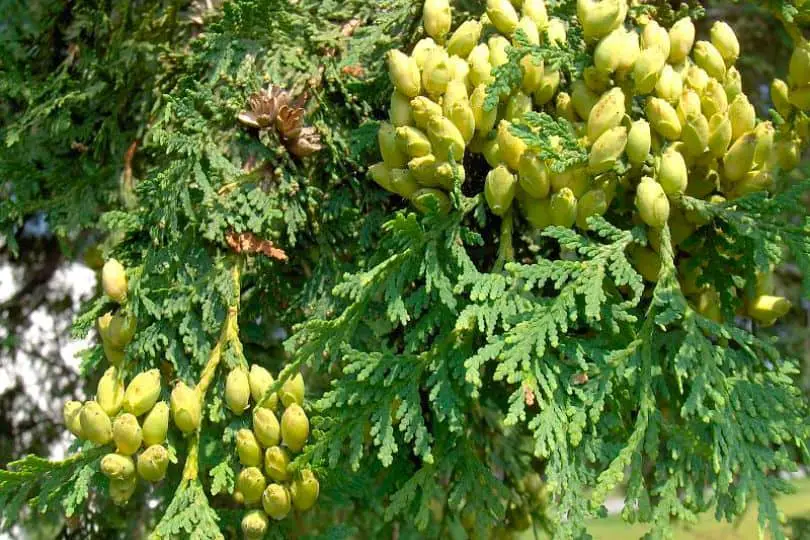
- Scientific Name: Thuja occidentalis
- Common Name(s): Northern White Cedar, Eastern Arborvitae, American Arborvitae
- Mature Height: 30-60 feet (9-18 meters)
- Native Region: North America
- Flowers: No flowers.
- Fruit: Small, brown, cone-like structures.
- Uses: Northern White Cedar is commonly used for landscaping purposes due to its dense foliage and attractive conical shape. The wood is also used in construction, particularly for making fences, shingles, and storage chests, due to its natural resistance to decay and insects. Additionally, the leaves and twigs of the tree are used in herbal remedies and teas for their medicinal properties.
Northern White Cedar, commonly known as Eastern Arborvitae or American Arborvitae, is a North American natural evergreen tree. It stands out for its slender, conical shape and dense foliage with scale-like leaves. When crushed, the leaves are yellow-green and emit a distinct perfume. At maturity, the tree can grow to a height of 30 to 60 feet (9 to 18 meters) with a spread of 10 to 20 feet (3 to 6 meters).
Northern White Cedar is typically found in moist or marshy places in Pennsylvania, as it prefers well-drained soils and plenty of moisture. Because of its dense growth habit, it is frequently planted in landscapes as a windbreak or privacy screen. The tree tolerates shade but thrives in full sun.
Northern White Cedar does not have beautiful flowers, but it does have small, brown cones that lend visual interest to the tree. These cone-like structures store seeds and provide a significant source of food for birds and other species.
When it comes to caring for Northern White Cedar trees in Pennsylvania settings, correct drainage is essential to avoid root rot. Watering is required regularly, especially during dry spells. Mulching around the tree’s base can help retain moisture and keep weeds at bay. Pruning is not usually necessary, however, it can be done to keep a desirable shape or to remove dead or diseased branches.
Pennsylvanians use Northern White Cedar in a variety of ways. The tree’s wood is highly appreciated because of its longevity and natural resistance to decay and insects. It is often used in buildings, including as fences, shingles, and storage chests. The tree’s leaves and twigs are frequently utilized in herbal treatments and drinks because they offer medicinal benefits.
2. Eastern Red Cedar
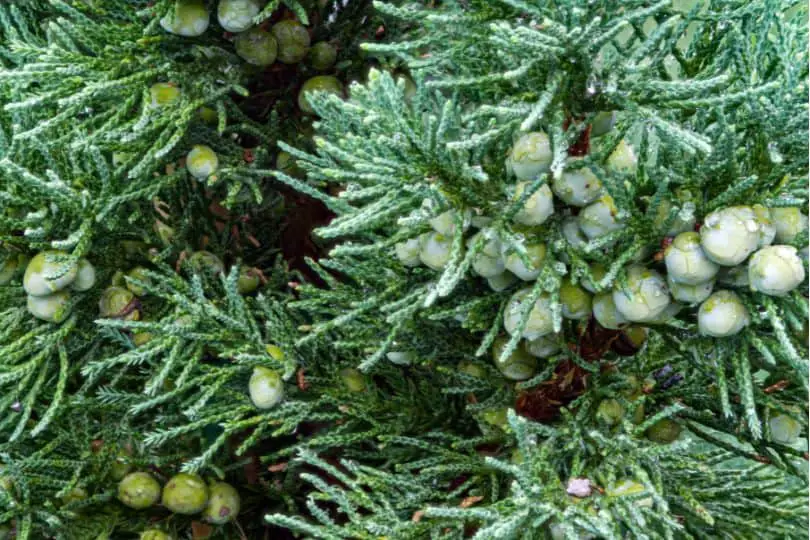
- Scientific Name: Juniperus virginiana L.
- Common Name(s): Eastern Redcedar
- Mature Height: Up to 40 feet (12 meters)
- Native Region: North America
- Flowers: No flowers.
- Fruit: Bluish, fleshy, berry-like cones with a white waxy coating, about ¼” in diameter, containing 1-2 seeds.
- Uses: The rot-resistant wood is commonly used for fence posts and moth-proof chests. The fruits are eaten by cedar waxwings, songbirds, and game birds.
The Eastern Redcedar, scientifically known as Juniperus virginiana L., is an evergreen tree that can grow to be 40 feet (12 meters) tall when mature. It is indigenous to North America and is common in Pennsylvania environments. Eastern Redcedar leaves are evergreen and opposite, having two varieties. The elder leaves are scale-like and can range in length from 1/16″ to 34″, whilst the younger leaves are sharp-pointed and can also range in length from 1/16″ to 34″. The older leaves feature whitish lines on their upper surface.
The Eastern Redcedar’s twigs are slender and normally four-sided, turning reddish brown as they age, and the buds are small and inconspicuous. The tree produces bluish, meaty, berry-like cones with a white waxy coating that is approximately 14″ in diameter. These cones have 1-2 seeds and mature in just one growing season. The cones’ meat is delicious and resinous.
The Eastern Redcedar has a reddish-brown bark that peels off in stringy and flaky pieces. It is a slow-growing, long-lived tree that can reach heights of 40 feet. This species is adaptable to a wide range of wet and dry climates, making it suited for a variety of Pennsylvania landscapes.
The Eastern Redcedar is frequently encountered as a pioneer plant in abandoned farm fields and on cliffs in the southern tier counties. It is appreciated for its rot-resistant wood, which is mostly used to make fence posts and moth-proof chests. Additionally, the tree produces fruits that cedar waxwings, various songbirds, and game birds all eat.
It is critical to ensure that Eastern Redcedar trees in Pennsylvania landscapes are planted in well-draining soil and receive appropriate sunlight. These trees are hardy and can withstand both rainy and dry circumstances.
During dry periods, regular watering is advised, especially in the first few years after planting. Pruning is necessary to keep the ideal form and to eliminate any dead or unhealthy branches. Pennsylvanians can enjoy the beauty and advantages of the Eastern Redcedar in their landscapes by following these care guidelines.
3. Port Orford Cedar
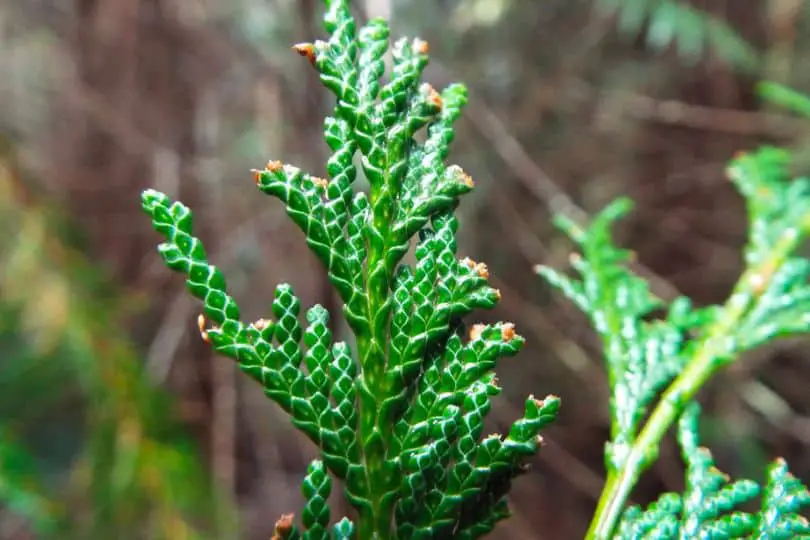
- Scientific Name: Chamaecyparis lawsoniana
- Common Name(s): Port Orford Cedar
- Mature Height: 150-200 feet (45-60 meters)
- Native Region: North America
- Flowers: Small, inconspicuous flowers
- Fruit: Small cones
- Uses: Commonly used for ornamental purposes, as well as in the construction industry for making furniture, siding, and decking.
The Port Orford Cedars are the tallest cedar trees in Pennsylvania that can grow to heights of 150-200 feet (45-60 meters). This tree is native to North America and is usually known as Port Orford Cedar. It is called after the Oregon coastal town of Port Orford, where it is prolific.
The tree’s narrow, conical shape and soft, dense leaves distinguish it. The scale-like and flattened leaves are placed in opposite pairs along the branches. When the tree is young, the bark is reddish-brown and flaky, but as it ages, it turns gray and fibrous.
Port Orford Cedars grow naturally in the United States Pacific Northwest region, particularly in Oregon and northern California. They are most commonly seen in humid coastal locations with moderate temperatures and heavy rains. It grows well in well-drained soil and full or partial shade.
Although Port Orford Cedars have small, inconspicuous blooms, they are valued largely for their lovely leaves and general appearance. The tree also produces little cones that contain the tree’s seeds. These cones offer visual appeal to the tree and eventually open to release seeds, which help in propagation.
Port Orford Cedars can be planted as decorative trees in Pennsylvania landscapes. They lend a touch of refinement to gardens and landscapes while providing year-round foliage. They can be used as individual trees or in groups to provide privacy screens or windbreaks. It is crucial to note, however, that this tree may not withstand harsh winters, particularly in colder areas of Pennsylvania, and may require protection from harsh conditions.
Port Orford Cedar wood is widely used in Pennsylvania for a variety of uses. Its tough wood is popular in the construction industry for creating furniture, paneling, and decking. The wood’s lovely reddish-brown hue and inherent resilience make it an excellent choice for outdoor use.
4. Japanese Cedar
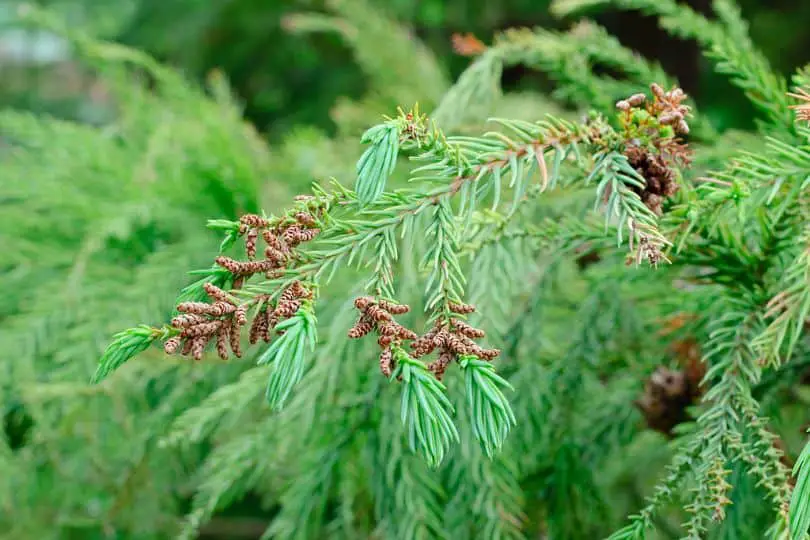
- Scientific Name: Cryptomeria japonica
- Common Name(s): Japanese Cedar, Sugi Cedar, Japanese Cryptomeria
- Mature Height: 50-70 feet (15-21 meters)
- Native Region: Japan and China
- Flowers: No flowers
- Fruit: Small cones
- Uses: Japanese Cedar is commonly used in construction, as well as for making furniture, cabinets, and woodcrafts. It is also planted as an ornamental tree in gardens and landscapes.
Sugi Cedar (Cryptomeria japonica), often known as Japanese Cryptomeria, is a huge evergreen tree native to Japan and China. Because of its versatility and distinctive appearance, it is commonly cultivated in landscapes and gardens throughout the United States, including Pennsylvania.
This tree has a pyramidal or conical shape and can reach a mature height of 50-70 feet (15-21 meters). It features dense, feathery foliage with needle-like leaves that are bright green. When crushed, the leaves are delicate and have a nice aroma. The Japanese Cedar’s bark is reddish-brown and acquires a lovely flaking texture as the tree matures.
Japanese Cedar is commonly employed in Pennsylvania landscaping as a specimen tree or as privacy screens and windbreaks. It prefers full sun to light shade and grows best in well-drained soil. It can endure urban areas and is tolerant of a wide range of soil conditions.
Although Japanese Cedar does not produce flowers, it does produce little cones that store seeds. These cones might enhance the visual appeal of the tree. Japanese Cedar wood is highly recognized for its durability and decay resistance, making it a popular choice for building and woodworking applications. Residents of Pennsylvania frequently use this tree to make furniture, cabinets, and woodcrafts.
Regular watering is crucial when caring for Japanese Cedar, especially during dry years. Mulching at the base of the tree is also recommended to help retain moisture. Pruning is necessary to remove any dead or broken branches and to keep the tree in its ideal form or size.
Similar Articles
- Common Flowering Trees In Pennsylvania
- Common Maple Trees In Pennsylvania
- Common Cherry Trees In Pennsylvania
- Common Pine Trees In Pennsylvania
- Native Locust Trees In Pennsylvania
- Common Nut Trees In Pennsylvania
- Common Oak Trees In Pennsylvania
- Common Palm Trees In Pennsylvania
- Common Birch Trees In Pennsylvania
- Common Aspen Trees In Pennsylvania
- Common Spruce Trees In Pennsylvania
- Common Ash Trees In Pennsylvania
- Common Elm Trees In Pennsylvania
- Pink Flowering Trees In Pennsylvania
- White Flowering Trees In Pennsylvania
- Purple Flowering Trees In Pennsylvania
Common Cedar Trees in Pennsylvania – Sources
The Regional Gardening team makes sure that the information in our articles is accurate by only using sources that are known to be trustworthy. Some of these sources are peer-reviewed journals from government agencies, well-known universities, and scientific research organizations.
- Native Plant Resources, Pennsylvania Native Plant Society
- Trees & Shrubs Varieties, PennState Extension
- Landscaping With Natives, Pennsylvania Department Of Conservation, & Natural Resources.
- Explore Pennsylvania Forests, Pennsylvania Department Of Conservation, & Natural Resources.


